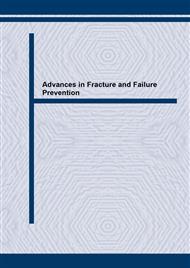p.231
p.239
p.245
p.251
p.257
p.263
p.269
p.277
p.283
Transient Anti-Plane Crack Problem in a Functionally Graded Smart Structure
Abstract:
The dynamic anti-plane crack problem in a functionally graded smart structure is considered. Integral transforms are employed to reduce the problem to the solution of singular integral equations. Numerical results are presented to show the nfluences of electrical crack condition, crack position, electromechanical combination factor and material gradient parameter on the fracture behavior.
Info:
Periodical:
Pages:
257-262
Citation:
Online since:
April 2004
Authors:
Price:
Сopyright:
© 2004 Trans Tech Publications Ltd. All Rights Reserved
Share:
Citation:


